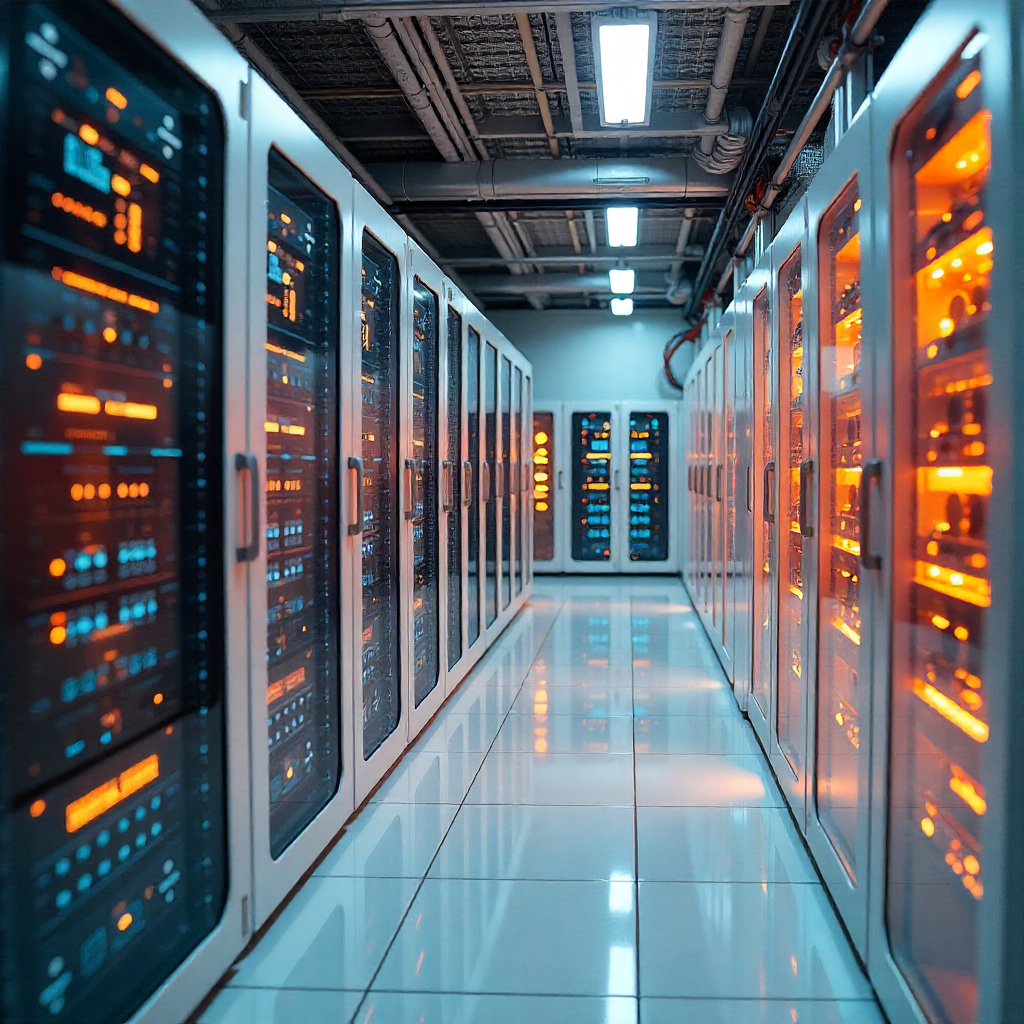
In today’s hyperconnected world, data is the new oil, and data centers are the refineries. From streaming platforms and cloud storage to AI, fintech, and enterprise applications, everything runs on data. But where does all this data live? What makes a colocation data center different from an office server room? How does the data center infrastructure management work?
Let us answer these questions one by one, from what a data center is, the types that exist, to where they are typically built and how businesses can best utilize them for long-term value.
What Is a Data Center?
Imagine a facility that holds important IT infrastructure of businesses like servers, networking equipment, storage systems, and power and cooling systems, which is a data center. So, in simple language, data centers are the places where that fuel is stored, managed, and delivered so everything online can run smoothly. They can handle everything from basic email hosting to large enterprise applications and cloud-based workloads.
Modern data centers consist of more than just racks and data center servers. They are purpose-built locations with redundant power systems, advanced fire suppression, climate control, and physical and cyber security to provide 24/7 availability.
Types of Data Centers
Depending on size, scale, and purpose, data centers can be broadly categorized into the following types:
1. Colocation Data Centers
These facilities are where businesses rent space for their servers and IT equipment and are run by third-party providers. The providers manage the building, power, cooling, and connectivity, and that means they are Infrastructure-as-a-service providers. While their client manages their own hardware, these providers sometimes also provide managed service support.
Instead of building and maintaining their own data center, companies can use a colocation data center to store their hardware in a safe, reliable place, with backup power, cooling, and security, all taken care of. This saves cost, effort, and gives better performance and protection.
2. Enterprise Data Centers
Typically owned and operated by a single organization, these are tailored to the specific needs of the business. They are often located on-premise or at dedicated sites. While enterprise data centers offer complete control, they require significant investment in data center infrastructure management.
3. Hyperscale Data Centers
These are massive facilities designed to support scalable cloud applications. Operated by tech giants like Amazon, Microsoft, and Google, hyperscale data centers can contain hundreds of thousands of servers across sprawling campuses. They are engineered for extreme performance, automation, and efficiency, often supporting AI and big data analytics.
4. Edge Data Centers
Located closer to users or devices, edge data centers reduce latency by processing data locally instead of routing it through centralized hubs. These are becoming critical for real-time applications such as IoT, autonomous vehicles, and AR/VR.
5. Green Data Centers
With sustainability becoming a major concern, green data centers are built with eco-friendly materials and energy-efficient systems. They utilize renewable energy sources, water-saving cooling, and intelligent power management to reduce environmental impact without compromising performance.
Where Are Data Centers Built?
Data centers are strategically located based on a combination of logistical, technica,l and regulatory factors:
- Connectivity: Locations near major internet exchange points or undersea cable landing stations are preferred for low latency and high-speed data transfer.
- Power Availability: Access to stable, affordable electricity (preferably renewable) is crucial for running and cooling thousands of servers.
- Climate: Cooler climates help reduce energy used for cooling, making regions like Scandinavia popular for hyperscale and green data centers.
- Risk Avoidance: Areas with a low risk of natural disasters (earthquakes, floods) are ideal to ensure continuous operation.
- Regulatory Compliance: Some businesses prefer regions with strong data privacy laws or favorable tax incentives.
Popular global hubs include Virginia (USA), Singapore, Frankfurt, Dublin and Mumbai. Many emerging regions are also witnessing rapid data center growth due to digital transformation and increasing demand for localized content.
How to Make the Most of Data Centers
Choosing the right data center strategy depends on your business goals, workloads and budget. Here’s how you can optimize value:
1. Leverage Colocation for Flexibility
Colocation allows you to scale up infrastructure without upfront capital investment. It’s ideal for hybrid IT models where certain workloads remain on-premise while others are moved to the cloud.
2. Use Data Center Infrastructure Management (DCIM)
Modern data center infrastructure management tools help monitor, control and optimize power usage, cooling, space and equipment health. This leads to better efficiency, reduced downtime and smarter decision-making.
3. Go Green Where Possible
Investing in or choosing partners with green data centers supports sustainability goals and often results in long-term cost savings. Look for facilities with certifications like LEED, ISO 50001, or those powered by renewable energy.
4. Choose the Right Partner
Whether you need hyperscale data center capacity or edge computing capabilities, selecting the right colocation or cloud provider can influence performance, cost and security. Ensure they offer redundancy, robust SLAs and compliance with relevant regulations.
5. Plan for the Future
The future of IT is hybrid and distributed. Make sure your data center strategy allows for flexible scaling, remote management and integration with emerging technologies like AI, IoT and 5G.
Conclusion
As businesses become increasingly data-driven, the role of data centers becomes even more critical. Whether it’s an on-premise setup, colocation data center, or cloud-hosted hyperscale data center, each type offers unique advantages. With the right strategy and infrastructure, organizations can ensure performance, scalability and sustainability, today and into the future.
